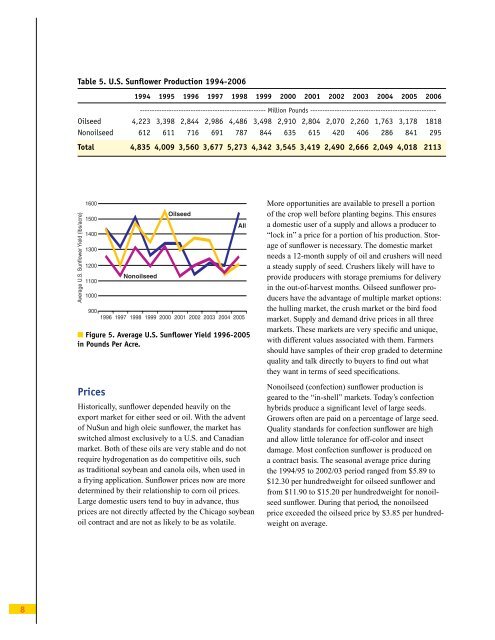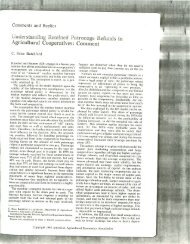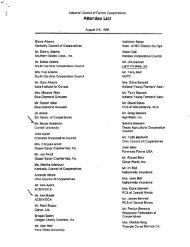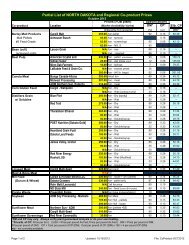Sunflower Production Field Guide - Your "Home Page"
Sunflower Production Field Guide - Your "Home Page"
Sunflower Production Field Guide - Your "Home Page"
Create successful ePaper yourself
Turn your PDF publications into a flip-book with our unique Google optimized e-Paper software.
8<br />
Table 5. U.S. Sunfl ower <strong>Production</strong> 1994-2006<br />
■ Figure 5. Average U.S. Sunfl ower Yield 1996-2005<br />
in Pounds Per Acre.<br />
Prices<br />
1994 1995 1996 1997 1998 1999 2000 2001 2002 2003 2004 2005 2006<br />
Oilseed<br />
---------------------------------------------------- Million Pounds ----------------------------------------------------<br />
4,223 3,398 2,844 2,986 4,486 3,498 2,910 2,804 2,070 2,260 1,763 3,178 1818<br />
Nonoilseed 612 611 716 691 787 844 635 615 420 406 286 841 295<br />
Total 4,835 4,009 3,560 3,677 5,273 4,342 3,545 3,419 2,490 2,666 2,049 4,018 2113<br />
Historically, sunfl ower depended heavily on the<br />
export market for either seed or oil. With the advent<br />
of NuSun and high oleic sunfl ower, the market has<br />
switched almost exclusively to a U.S. and Canadian<br />
market. Both of these oils are very stable and do not<br />
require hydrogenation as do competitive oils, such<br />
as traditional soybean and canola oils, when used in<br />
a frying application. Sunfl ower prices now are more<br />
determined by their relationship to corn oil prices.<br />
Large domestic users tend to buy in advance, thus<br />
prices are not directly affected by the Chicago soybean<br />
oil contract and are not as likely to be as volatile.<br />
More opportunities are available to presell a portion<br />
of the crop well before planting begins. This ensures<br />
a domestic user of a supply and allows a producer to<br />
“lock in” a price for a portion of his production. Storage<br />
of sunfl ower is necessary. The domestic market<br />
needs a 12-month supply of oil and crushers will need<br />
a steady supply of seed. Crushers likely will have to<br />
provide producers with storage premiums for delivery<br />
in the out-of-harvest months. Oilseed sunfl ower producers<br />
have the advantage of multiple market options:<br />
the hulling market, the crush market or the bird food<br />
market. Supply and demand drive prices in all three<br />
markets. These markets are very specifi c and unique,<br />
with different values associated with them. Farmers<br />
should have samples of their crop graded to determine<br />
quality and talk directly to buyers to fi nd out what<br />
they want in terms of seed specifi cations.<br />
Nonoilseed (confection) sunfl ower production is<br />
geared to the “in-shell” markets. Today’s confection<br />
hybrids produce a signifi cant level of large seeds.<br />
Growers often are paid on a percentage of large seed.<br />
Quality standards for confection sunfl ower are high<br />
and allow little tolerance for off-color and insect<br />
damage. Most confection sunfl ower is produced on<br />
a contract basis. The seasonal average price during<br />
the 1994/95 to 2002/03 period ranged from $5.89 to<br />
$12.30 per hundredweight for oilseed sunfl ower and<br />
from $11.90 to $15.20 per hundredweight for nonoilseed<br />
sunfl ower. During that period, the nonoilseed<br />
price exceeded the oilseed price by $3.85 per hundredweight<br />
on average.







